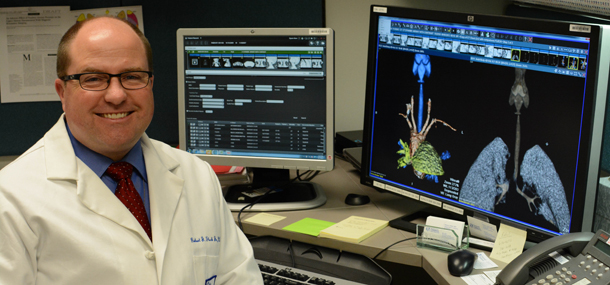
In the Cincinnati Children’s Radiology Department, computerized systems play an important role in providing the best care for your child. Long gone are the days when x-ray pictures were developed on film in a dark room and then looked at using light boxes. Now all radiology studies performed at Cincinnati Children’s are saved digitally in a sophisticated computer system called PACS (Picture Archiving and Communication System).
Using PACS technology not only has advantages for the radiologists looking at the imaging, but also for collaborating doctors caring for your child and ultimately for the patients and their families. Using computers with high-resolution monitors and specialized software, the radiologists can display current images and any previous radiology studies together. This enhances the information available to the radiologist to better support the imaging diagnosis. Reports of all radiology imaging are created on a specialized voice recognition computer system, which allows the radiologists to dictate a report so that it is more quickly available to the doctors caring for your child. Since the images and reports are stored centrally in the PACS, any doctor caring for your child will be able to access this information.
In the radiology department, we are always striving to optimize our level of service for our patients. The advanced computer imaging systems that we use allow our radiologists to better diagnose and care for your child. For example, using advanced imaging systems, our doctors can view the heart and vessels as a rotating, 3-dimensional picture. This real-life model can actually demonstrate your child’s heart as it is working. This can be extremely useful in understanding very small details of anatomy and diagnosing the precise issues related to a heart problem. Other computer systems allow us to join together or fuse different types of scans to more accurately detect where active tumors are located within the body. There are even special computer imaging programs that are used in collaboration with surgical teams to help guide surgeons when performing intricate procedures.
Our informatics team is continually working to create better systems for the collection, storage, retrieval and processing of images. These systems improve the quality and value of the imaging being done and can ultimately change the outcome for your child.
Story contributed by Jay Moskovitz, MS and edited by Catherine Leopard.